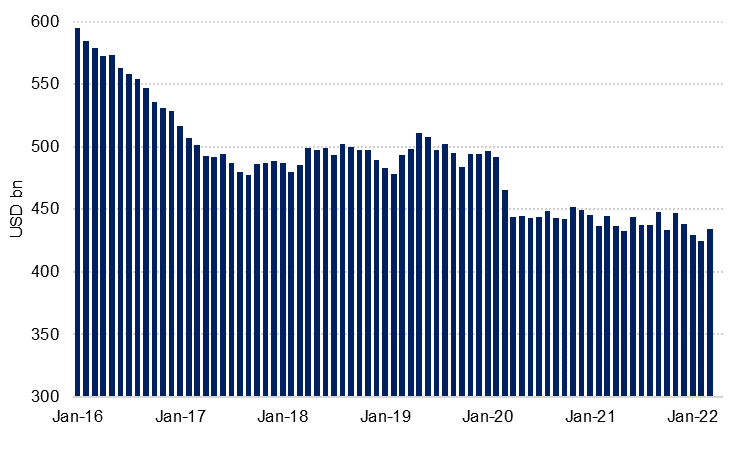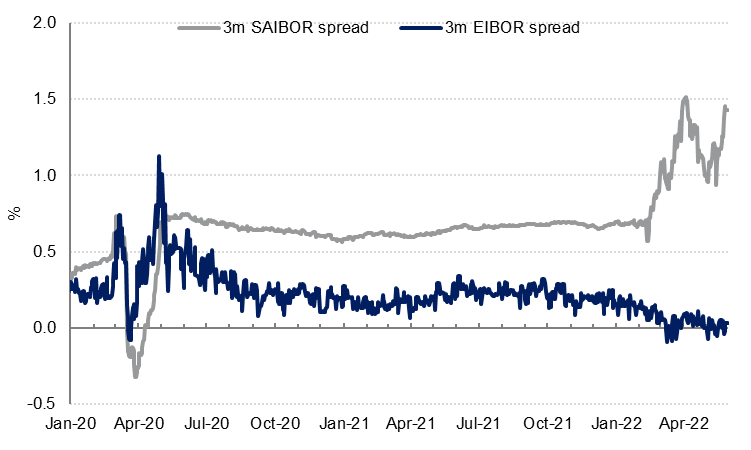
Saudi Arabia recorded a budget surplus of SAR 57.5bn (USD 15.3bn) in Q1 2022 as higher oil production and prices pushed up oil revenues by 58% y/y, while expenditure rose just 4% y/y. On the revenue side, non-oil revenue growth in the first quarter was just under 7% y/y, as investment income declined on an annual basis, offsetting growth in customs and other tax revenue.
The government has maintained discipline on spending, despite much higher than expected oil revenues. Wage growth was contained at 1.8% y/y, broadly in line with annual inflation in the first quarter. Other components of current spending (interest payments, goods & services and other expenses) grew at a double-digit rate in Q1 but was offset by lower subsidies and grants. Capital spending also declined slightly on an annual basis as the government continues to shift most of its investment spending off the budget to the Public Investment Fund and other investment vehicles.
The budget surplus recorded in Q1 was the largest quarterly surplus in over six years. In addition to this, the government issued a net SAR 20.6bn in domestic debt, and there was no change to the external debt stock in the first quarter of this year.
The central bank’s monthly statistics showed that government deposits at the central bank increased by SAR 52bn in Q1 2022, with most of this reflected in a higher government current account balance in the month of March. However, the increase in government balances at the central bank was not matched by higher foreign assets (deposits with banks abroad and investment in foreign securities together declined by almost SAR 20bn in Q1 2022) but rather by an increase in “other miscellaneous assets”, which grew by SAR 47bn and a SAR 5.5bn increase in foreign currency holdings at SAMA. It’s not clear what the increase in “miscellaneous assets” on the central bank's balance sheet could be, but they could include loans to other entities or non-financial assets.
 Source: Haver Analytics, Emirates NBD Research
Source: Haver Analytics, Emirates NBD Research
The monetary survey showed that private sector credit growth continues to grow at a robust 14% y/y, as it has since late 2020. Credit to public sector enterprises has also increased sharply over the last year. Deposit growth meanwhile has picked up in recent months, reaching 8.4% y/y in March. While this is a healthy rate of deposit growth, it remains well below the growth in credit in the banking system, and this has likely contributed to tighter liquidity conditions in the banking system since the start of the year. This is evident in the widening of the spread between the Saudi 3m interbank rate over 3m USD LIBOR since January.
 Source: Bloomberg, Emirates NBD Research
Source: Bloomberg, Emirates NBD Research
To the extent that the government uses the unexpected oil revenue this year to rebuild foreign reserves, pay down debt or finance investment through PIF and other entities, as we expect it will, the additional liquidity may not filter through to the domestic banking system. This seemed to be confirmed by the Saudi finance minister who told Bloomberg that the government would not look to spend any of the oil windfall until next year.